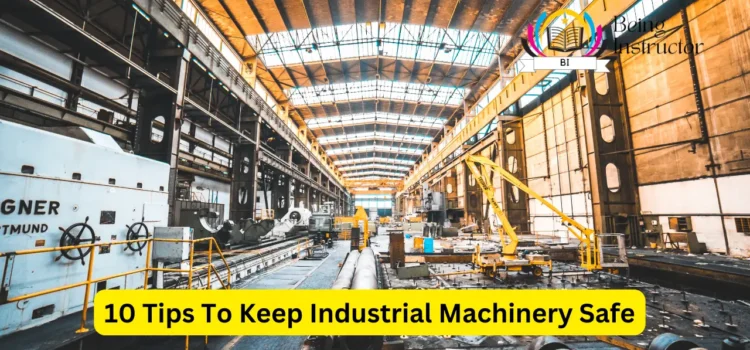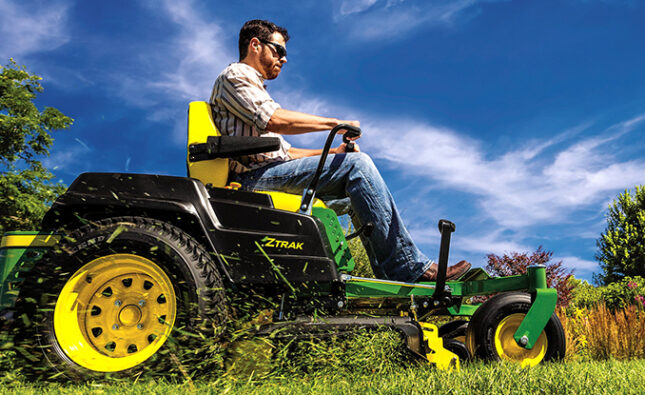To keep your industrial machinery safe, start by conducting regular inspections and maintenance. Always train your staff thoroughly, ensuring they’re up to date with safety protocols. Implementing safety guards is essential, alongside adhering to the manufacturer’s guidelines.
Promptly report any issues and make sure they’re addressed. Don’t skimp on wearing the appropriate safety gear and establish clear emergency procedures. Staying updated on safety standards is vital for a secure workplace.
Finally, prioritize a culture of safety and compliance within your team. This approach not only safeguards your machinery but also cultivates a responsible workforce, setting the foundation for further insights into maintaining workplace safety.
Conduct Regular Inspections
Regular inspections are vital for maintaining the safety and efficiency of your industrial machinery. By embracing the latest inspection technology, you’re not just ensuring the well-being of your equipment but also fostering a sense of responsibility and care within your team.
Implement Routine Maintenance
To ensure your industrial machinery operates safely and efficiently, it’s vital to establish a routine maintenance schedule for regular inspections.
By incorporating inspection tools into your maintenance plan, you’re not just guaranteeing the smooth operation of your equipment; you’re also cultivating a culture of safety and belonging among your team.
Everyone plays a pivotal role in maintaining the well-being of the machinery that keeps your operations running.
Regular inspections are also essential to staying ahead of regulatory compliance, helping you avoid penalties and ensuring your practices meet industry standards.
Train Staff Properly
Starting a comprehensive training program guarantees that your staff are well-equipped to manage industrial machinery safely. By integrating interactive modules and feedback mechanisms, you’re not just teaching them; you’re engaging them in a learning community. This approach fosters a sense of belonging and certifies everyone’s on the same page regarding safety procedures.
To deepen your understanding, consider these elements:
- Interactive modules to simulate real-life scenarios
- Feedback mechanisms for continuous improvement
- Tailored sessions that cater to individual learning paces
- Hands-on practice to build confidence
- Regular refresher courses to keep knowledge up to date
Utilize Safety Guards
Implementing safety guards on industrial machinery greatly reduces the risk of accidents and injuries in the workplace. By choosing the right industrial parts and enhancing visibility, you’re not just complying with safety standards; you’re fostering a culture of care and protection. Here’s how you can make everyone feel included in the safety process:
- Opt for durable guard materials that withstand daily operations.
- Integrate visibility enhancements to make sure guards are easily seen.
- Involve your team in safety drills to familiarize them with guard locations.
- Regularly inspect guards for wear and tear to maintain their integrity.
- Encourage feedback on guard effectiveness and comfort, fostering a sense of belonging.
Follow Manufacturers Guidelines
Following the manufacturer’s guidelines guarantees that your industrial machinery operates safely and efficiently. Adhering to these instructions isn’t just about maximizing performance; it’s about creating a culture of safety and compliance within your workspace.
When you follow these guidelines, you’re not only ensuring the well-being of your machinery but also fostering a sense of belonging among your team, as everyone works towards a common goal of safety and efficiency.
Keep Work Areas Clean
Maintaining a clean work area is vital for ensuring safety around industrial machinery. It’s not just about keeping the floor tidy; it’s about creating a space where you and your team can work safely and efficiently.
Good lighting conditions are essential. They help everyone see potential hazards and avoid accidents. Make sure all areas are well-lit, replacing any faulty lights promptly to prevent shadows or dark spots that could conceal risks.
Report and Address Issues Promptly
Immediately reporting any mechanical issues or safety hazards you encounter is crucial for preventing accidents and guaranteeing the workplace remains safe. You’re part of a community where everyone’s safety is interconnected. Being proactive not only safeguards you but also your colleagues.
- Log issues immediately using digital tracking to make sure nothing gets overlooked.
- Participate in incident analysis to understand what went wrong and how to prevent it.
- Encourage open communication about safety concerns without fear of reprisal.
- Share insights and solutions found during personal encounters with machinery malfunctions.
- Prioritize regular check-ins on resolved issues to confirm long-term safety.
Wear Appropriate Safety Gear
Donning the correct safety gear is crucial for safeguarding yourself in an industrial setting. It’s not just about having safety gear; it’s about guaranteeing it fits you perfectly. Gear customization isn’t just a luxury; it’s a necessity that assures your protective equipment works as intended, keeping you safe and secure among your peers.
Establish Emergency Procedures
Establishing clear emergency procedures is vital for ensuring quick and effective responses to any incidents in an industrial environment. It’s about creating a sense of security and belonging, knowing you’re prepared for anything.
Here are some key elements to ponder:
- Clearly visible emergency signage to guide everyone to safety.
- Regular drills to guarantee everyone knows their role during a crisis.
- A thorough crisis communication plan to keep all stakeholders informed.
- Accessible emergency equipment, such as fire extinguishers and first aid kits.
- A designated emergency response team, trained to handle various scenarios.
Stay Updated on Safety Standards
Building on the foundation of emergency preparedness, it’s equally important to keep abreast of the latest safety standards in the industrial machinery sector. You’re not just a cog in the machine; you’re part of a community committed to safety and innovation.
Conclusion
You’ve got the power to keep your industrial machinery humming safely. By conducting regular inspections and sticking to routine maintenance, you’re setting the stage for a safer workspace.
Coincidentally, training your staff properly, using safety guards, and following manufacturers’ guidelines aren’t just recommendations—they’re your ticket to preventing accidents.
Remember, promptly addressing issues, wearing the right safety gear, and knowing your emergency procedures are essential.
Staying updated on safety standards? That’s the cherry on top. Keep it up, and you’ll not only protect your machinery but also your team.
FOR MORE INFORMATION VISIT OUR HOMEPAGE:






